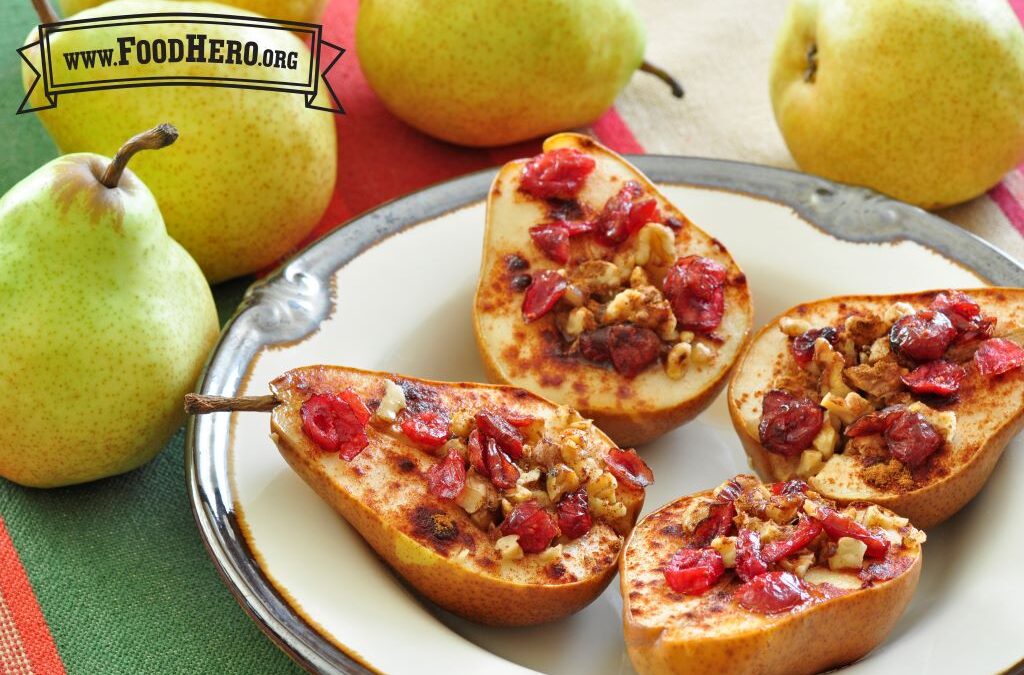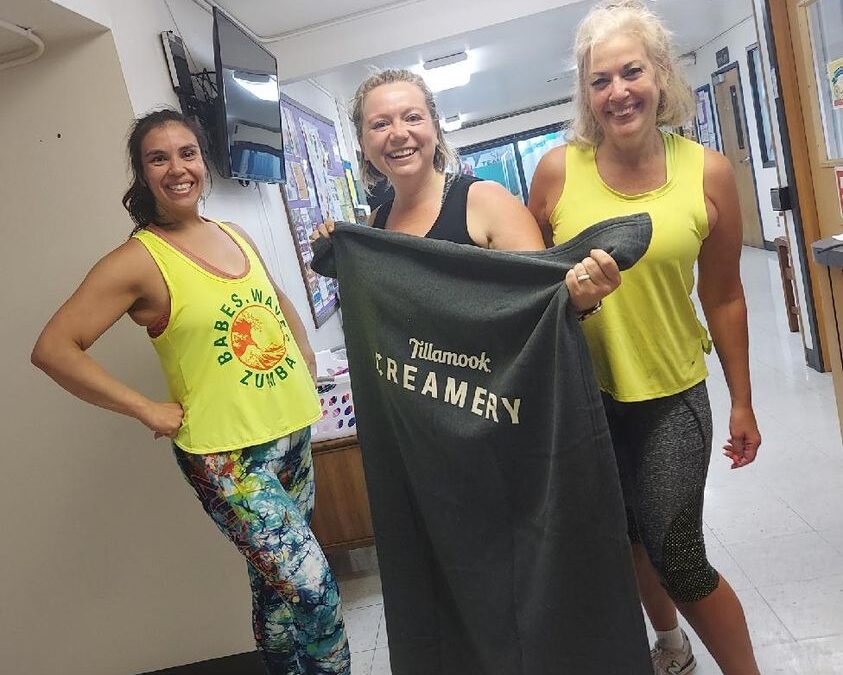
by Guest | Nov 16, 2022 | Recipes
These tender, low fat biscuits are a perfect way to use up extra sweet potatoes (or yams). I sometimes bake an extra sweet potato for dinner and use it to prepare these slightly sweet and spicy biscuits within a couple of days. They come together quickly and contain more fiber and vitamins than traditional biscuits. Serve hot from the oven or warm with butter, jam, honey, cream cheese or sharp cheese or serve on the side with a bowl of soup, beans or stew.
Ingredients:
- 2 cups whole-wheat pastry flour or white whole-wheat flour (all purpose flour works too)
- 1 Tablespoon baking powder
- ¾ teaspoon salt
- ½ teaspoon baking soda
- 1 Tablespoon sugar
- 1/8 – ¼ teaspoon ground cayenne pepper
- ¼ teaspoon ground cinnamon
- ¼ teaspoon ground ginger OR nutmeg
- ¾ cup cooked, peeled, mashed sweet potato or yam (canned works too)
- 2 Tablespoons melted butter or margarine OR refined coconut oil
- ½ cup milk (any kind, unsweetened and unflavored)
Directions
- Preheat oven to 425 F. Line a metal baking pan with parchment or foil.
- Combine dry ingredients in medium large bowl. Whisk well.
- In a smaller bowl, combine the mashed sweet potato, melted butter and milk, stirring well.
- Stir the wet mixture into the dry mixture.
- Knead the dough 5 or 6 times, turning the dough over itself to create layers.
- Flatten dough to ¾ inch thickness.
- Cut with a 2-½ inch biscuit cutter.
- If you want biscuits with lightly crisp browned outsides, evenly space biscuits in prepared pan so they aren’t touching. If you want them all over soft, place them closer together.
- Bake the biscuits in the preheated oven for 12-15 minutes, or until bottoms are golden.
Yields about 12 biscuits.
Recipe Source: Judith Berman-Yamada, Kitchen Maven
Find more Kitchen Maven recipes in the recently published Cookbook, “Thrifty Comfort Cooking for Challenging Times” where 100% of author royalties go directly to the Oregon Food Bank to assist folks dealing with food insecurity. The cookbook is available on both Amazon.com and Barnes & Noble.com. It’s an eclectic cookbook to suit all diets and contains over 100 recipes.

by Guest | Nov 9, 2022 | Recipes
Prep Time: 15 minutes
Cook Time: 30 minutes
Ingredients
- 2 ripe pears
- 3 Tablespoons chopped walnuts
- 2 teaspoons honey (see Notes) orbrown sugar
- ¼ teaspoon cinnamon
- 1 Tablespoon dried cranberries
Directions
- Wash hands with soap and water.
- Preheat oven to 350 degrees F.
- Cut pears in half lengthwise. Scoop out the seeds with a spoon or melon baller.
- Place the pears in a baking dish. Fill centers with walnuts and drizzle about half a teaspoon of honey over each pear.
- Sprinkle each pear half with cinnamon and cranberries.
- Bake for 25 to 30 minutes or until pears are soft when poked with a fork. Serve warm.
- Refrigerate leftovers within 2 hours.
Notes
- Honey is not recommended for children under 1 year old.
Photo and Recipe Source: https://foodhero.org/recipes/cinnamon-baked-pears

by Guest | Nov 9, 2022 | Being Well
In October, Tillamook County Wellness offered a popular series of classes on financial literacy. We learned that we always have something new to learn about how to manage the everyday costs of living. But that got me thinking, “What are the costs of living with a chronic condition, like diabetes, and how does that affect your overall lifestyle?”
Many people think of diabetes as merely an issue of too much sugar in the diet. However, diabetes can not only cause long-term health issues, but it can also mean additional expenses over time, especially if it is not treated properly. In fact, diabetes is the most expensive chronic condition in the United States. People with diabetes must manage their condition and consider the cost of doctor’s visits, medications, and supplies.
For people with diabetes, maintaining healthy blood sugar levels help decrease the risk of complications, such as nerve damage, vision problems and heart disease, among other problems. Naturally, better management of the disease can also mean lower health care costs.
Let’s consider some of the costs on a personal level related to diabetes.
People diagnosed with diabetes shoulder medical expenses 2.3 times greater than those without diabetes. According to the researchers at Good Rx, when the various costs are tallied, including the cost of extra doctor visits, over-the-counter supplies, and lost wages, a typical person with diabetes taking insulin could spend a shocking $4,800 a year in extra costs – even with health insurance. That figure represents about 10% of the average American’s annual wage.
Costs get even more expensive for those living with uncontrolled diabetes, with more than one chronic condition, or those lacking insurance altogether.
More than 30 million Americans have diabetes, and more than seven million of those people treat their condition using insulin. In Tillamook County, it is estimated that one in three people have prediabetes, and that nine out of ten don’t even know it or have no symptoms. Those numbers have likely increased during the pandemic, but they have not been measured yet.
These out-of-pocket costs present a significant burden for people with diabetes, over and above the work of monitoring their disease, checking blood glucose levels, and the toil of regular insulin injections.
You can take control of these potential costs by prevention — lifestyle changes can help prevent the onset of type 2 diabetes, the most common form of the disease. Prevention is especially important if you’re currently at an increased risk of type 2 diabetes because of excess weight or obesity, high cholesterol, or a family history of diabetes.
The Tillamook County Family YMCA offers a year-long program with the goal of losing 6-7% of body fat and working up to 150 minutes of physical activity each week. The group meets every week for the first 16 weeks and every other week after that. The next cohort is expected to begin at 5:30 p.m. on Tuesday, Feb. 21, 2023. And the best part, this program is free!
Past participants of the National Diabetes Prevention Program (mentioned above) have lost 15-19 lbs. on average and increased their activity to 151-550 minutes per week on average. Those are impressive – yet very attainable – statistics that will improve your overall health.
Additionally, the Tillamook County Family YMCA offers a wide range of programs to help you live a better, healthier life: including the National Diabetes Prevention Program, Living Well with Diabetes, Living Well with Chronic Conditions, Tai Chi, Qi Gong and other fitness programs. Check out their website for more information at https://tillamookymca.org/.
The bottom line is, that taking a few simple changes in your lifestyle now may help you avoid the serious health complications of diabetes in the future and save you money as well. It’ s never too late to get started!
AUTHOR: Patti Atkins, APR, Marketing Communications Consultant to TCCHC
Other wellness questions? Email us at info@tillamookcountywellness.org. For more local health and wellness information, visit www.tillamookcountywellness.org or follow Tillamook County Wellness on Facebook and Instagram.

by Guest | Nov 2, 2022 | Recipes
Prep Time: 20 minutes
Cook Time: 45 minutes
Ingredients
- 2 Tablespoons uncooked white rice
- ¼ cup grated carrot or zucchini
- ½ cup finely chopped onion, divided
- 1 ¼ cup finely chopped tomato, divided
- 1 egg
- ½ teaspoon salt
- ½ teaspoon chopped fresh oregano or ¼ teaspoon dried oregano
- ½ teaspoon chopped fresh mint or ¼ teaspoon dried mint (optional)
- 8 ounces ground meat, 15% fat or less (beef, chicken, turkey or pork)
- ¼ cup plain bread crumbs (optional)
- 2 teaspoons vegetable oil
- 6 cups low-sodium broth (any type)
- 1 or 2 sprigs fresh oregano or 1/2 teaspoon dried oregano
- 1/4 teaspoon garlic powder or 1 clove garlic, minced (optional)
- 2 cups chopped vegetables (fresh, frozen or canned)
Directions
- Wash hands with soap and water.
- For meatballs: In a medium bowl, mix together the rice, carrot, ¼ cup onion, ¼ cup tomato, egg, salt, oregano and mint, if desired. Mix in ground meat. Add bread crumbs to help the mixture stick together, if desired.
- Using the palms of your hands or a scoop, roll the mixture into balls about 1 ½ inches in diameter. Set the meatballs aside and wash your hands with soap and water after handling raw meat.
- In a large saucepan, heat oil on medium heat. Add ¼ cup onion and 1 cup tomato and cook for 1 minute.
- Stir in broth, oregano and garlic powder, if desired. Bring to a boil, then reduce heat to simmer.
- Add meatballs to the broth. Cover and simmer until the internal temperature of a meatball reaches 165 degrees on a food thermometer, about 20 minutes.
- Add vegetables to the soup and simmer, covered, until the vegetables are tender, about 10 to 15 minutes.
- Refrigerate leftovers within 2 hours.
Notes
- Top with a squeeze of lime juice and chopped cilantro.
- No breadcrumbs? Use 1 Tablespoon cornstarch instead.
- Thanks to the Food Hero Latinx Workgroup for this recipe.
Photo and Recipe Source: https://www.foodhero.org/recipes/meatball-soup-0?fbclid=IwAR3mgYu2TihsgRszLdTTUWwrzdbhnAbpdy9O9CEF0tYvVo3koS-AyTYMCkk

by Guest | Nov 1, 2022 | Being Well
If you’ve been following Tillamook County Wellness this year, there’s a good chance that you heard about our “This Way to Well-Being” map activity that we’ve been sharing the last few months. This map stemmed from many discussions of wanting to create something fun and engaging that highlights a broader range of wellness – where the focus is not just on benefiting our physical health, but also our mental and emotional health. (And as an extra bonus, we handed out prizes such as Hydro Flasks, county / state parks passes, fair tickets, and local business certificates to randomly selected participants!)
We created this map of local activities with no set starting point or finish line based on the idea that there is no “right” path to wellness. We all have different interests that motivate us (as well as different challenges that may create barriers) so this map was created to serve as a guide for ideas when thinking about what we find exciting and what we might want to try here in Tillamook County. The “This Way to Well-Being” map included local ideas for enjoying the outdoors, connecting with friends and family, trying new foods, prioritizing your mental health, and more. You can view the map here on the Tillamook County Wellness website.
But we also wanted to hear from participants about what we might be missing – What did you enjoy? And what should we add? The survey responses we received were thoughtful and energizing. Here are a few suggestions that we received about what could be added to the map:
“Create art”
“Start recycling / composting”
“Practice meditation”
“I’d like more ways to meet like-minded people. Perhaps something like sharing a meal with a new friend.”
“Maybe something about sleep, laughter, mental health?”
“Yoga practice. Fostering homeless animals for United Paws or adopting a cat or dog from the Tillamook Animal Shelter”
Not only do we want to thank our participants for their excitement and engagement, but also our community partners who helped spread the word about the “This Way to Well-Being” map. This wouldn’t have reached nearly as many people without the support of the Tillamook Family YMCA, Food Roots, Tillamook County Community Health Center, North Coast Recreation District, Rinehart Clinic, Tillamook Bay Community College, Tillamook Library branches, Tillamook Food Pantries, Kiawanda Community Center, and local worksites. These organizations shared our printed maps with community members and helped distribute prizes to those who were taking steps to prioritize their health. (For example, the picture with this article shows YMCA instructors Kelly Benson and Sarah Patterson awarding one of the prizes to Megan, a new YMCA member!)
Although we’re wrapping up our printed map and prize distribution at the end of October, we are planning on keeping the map up on our webpage and adding a section about the suggestions we received in the survey. We hope it can continue to be used by anyone in Tillamook County who is looking for a little inspiration in starting up their own journey towards a happier, healthier life.
Other wellness questions? Email us at info@tillamookcountywellness.org. For more local health and wellness information, visit www.tillamookcountywellness.org or follow Tillamook County Wellness on Facebook and Instagram.





